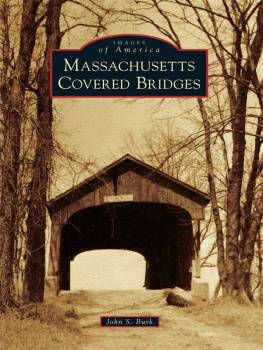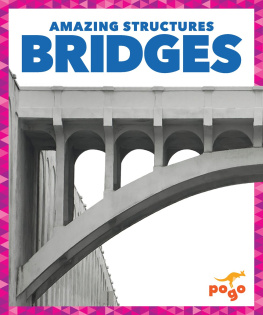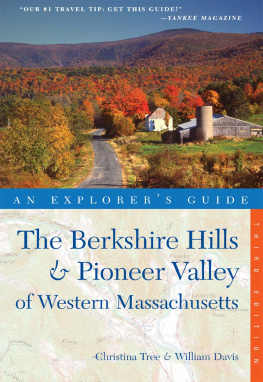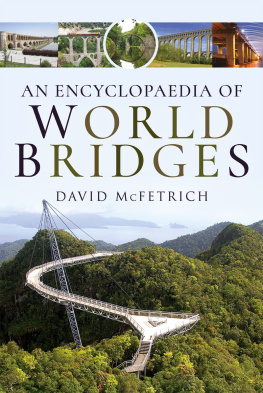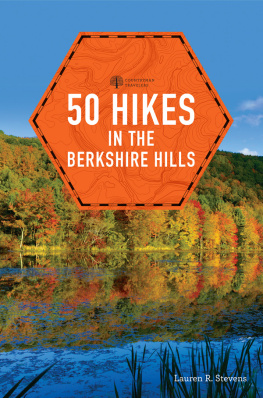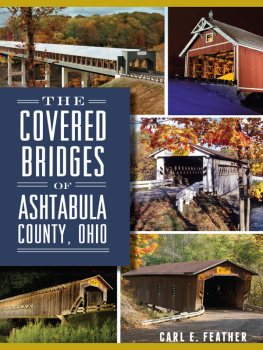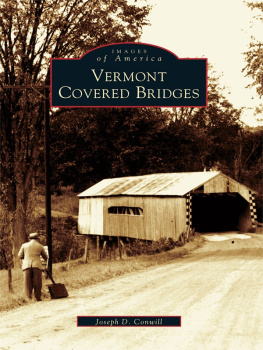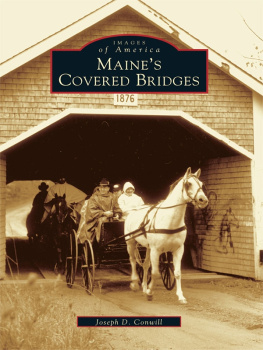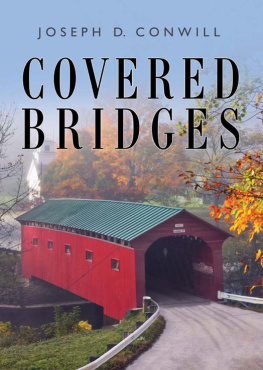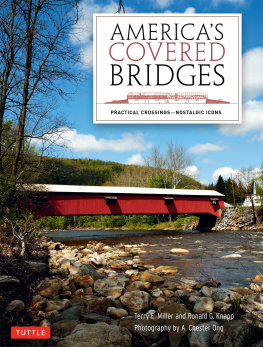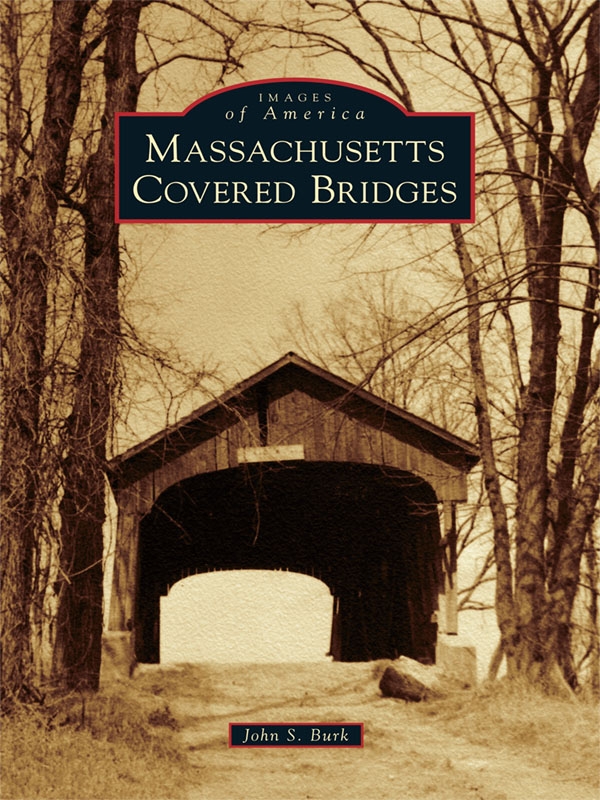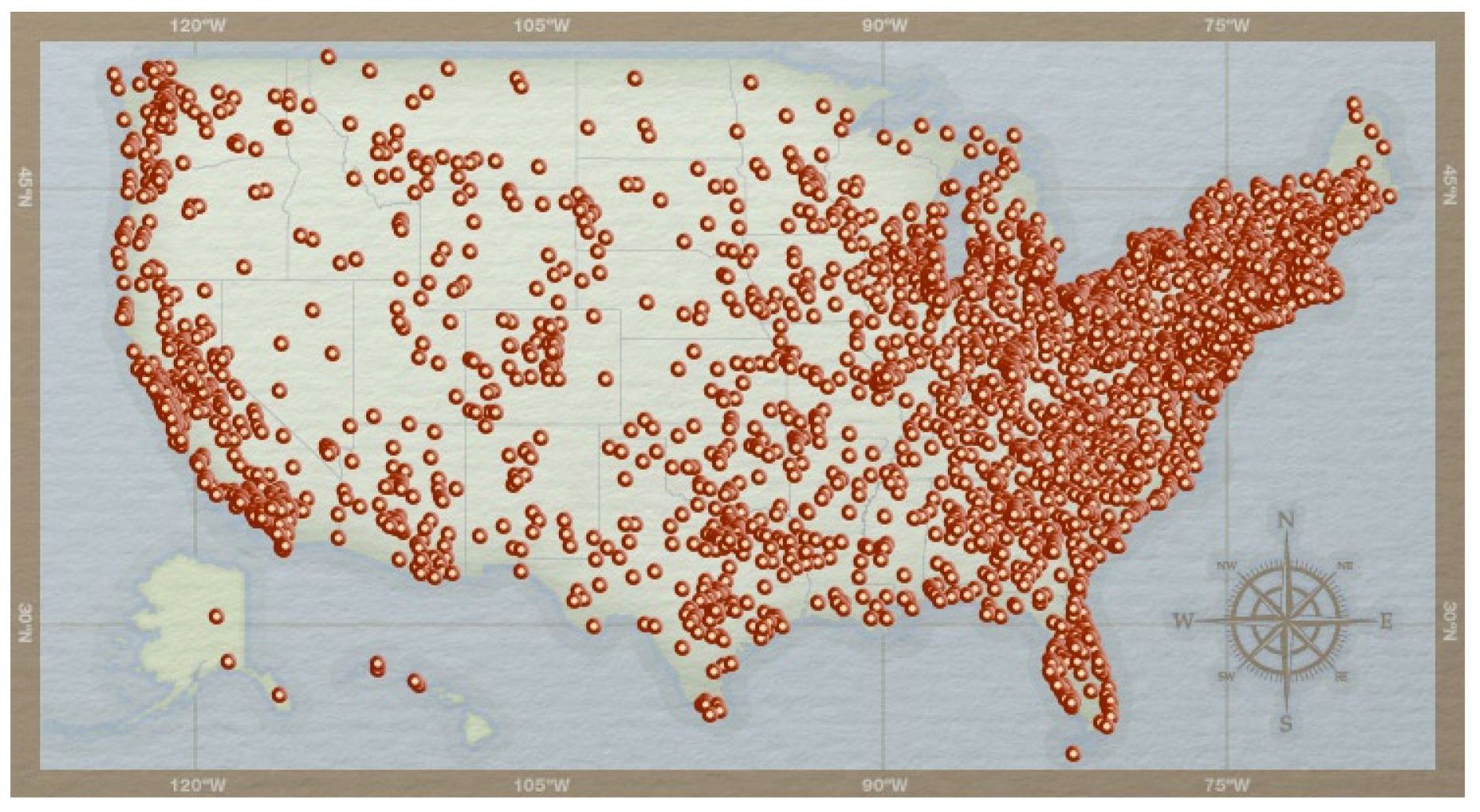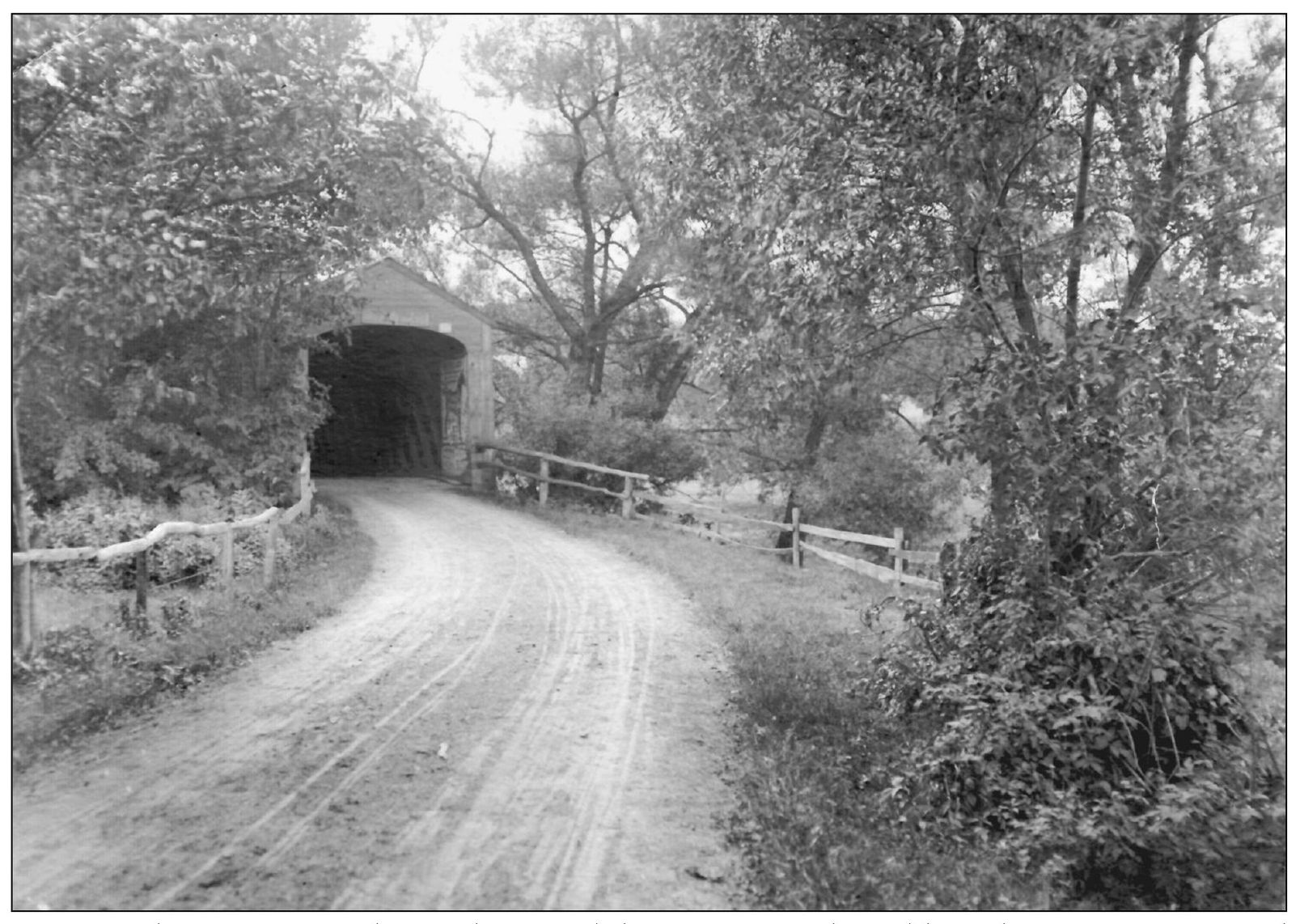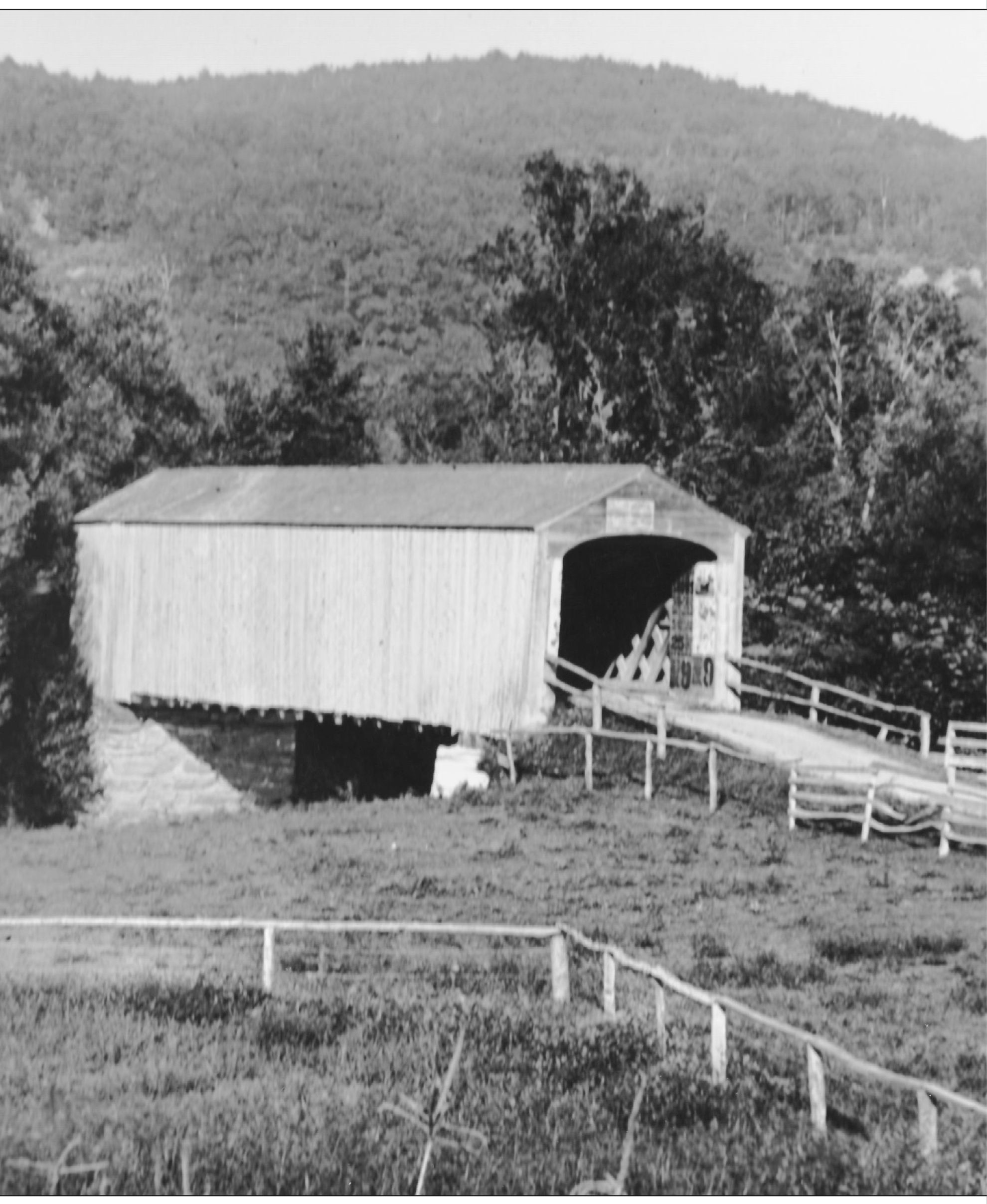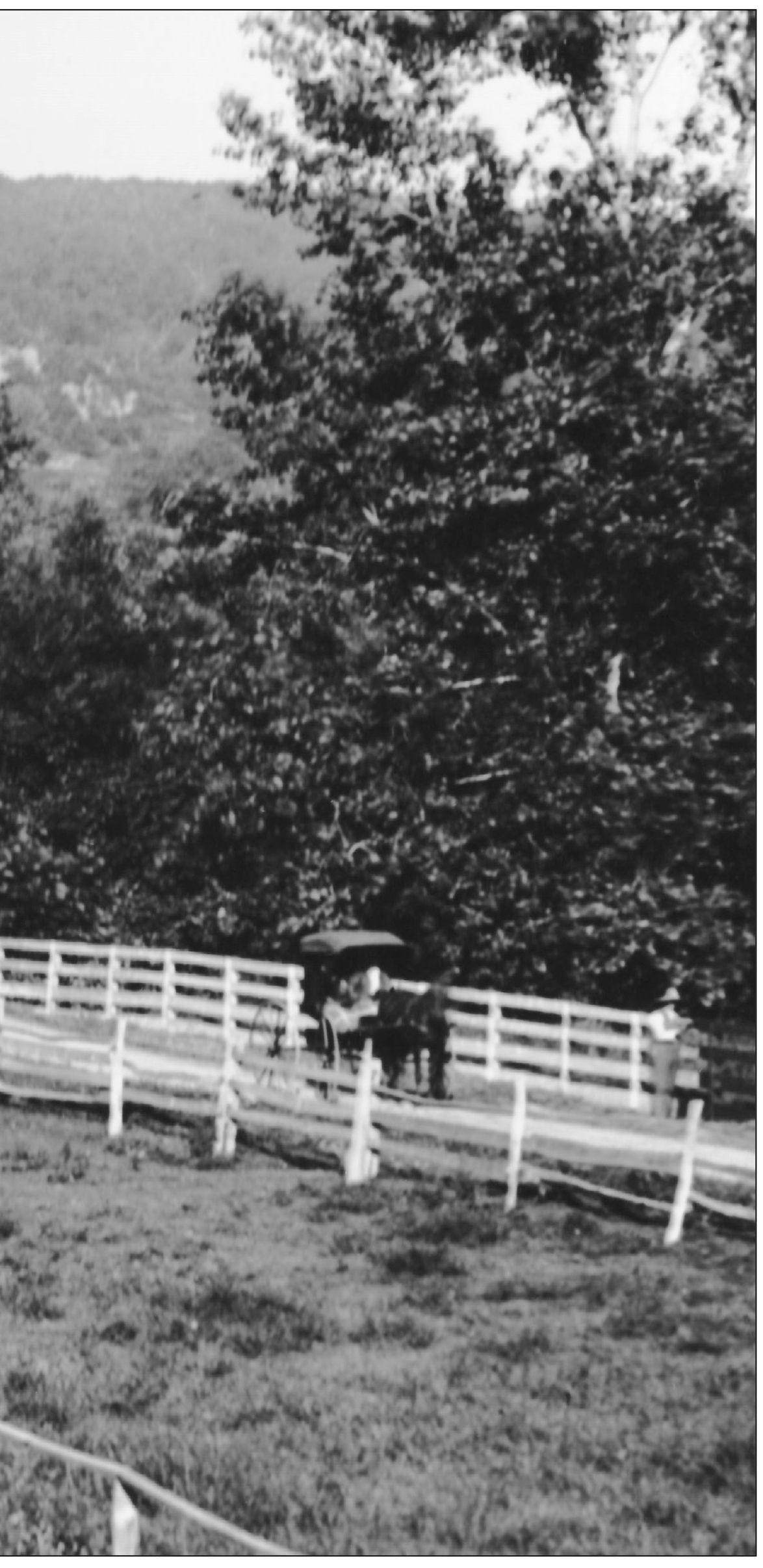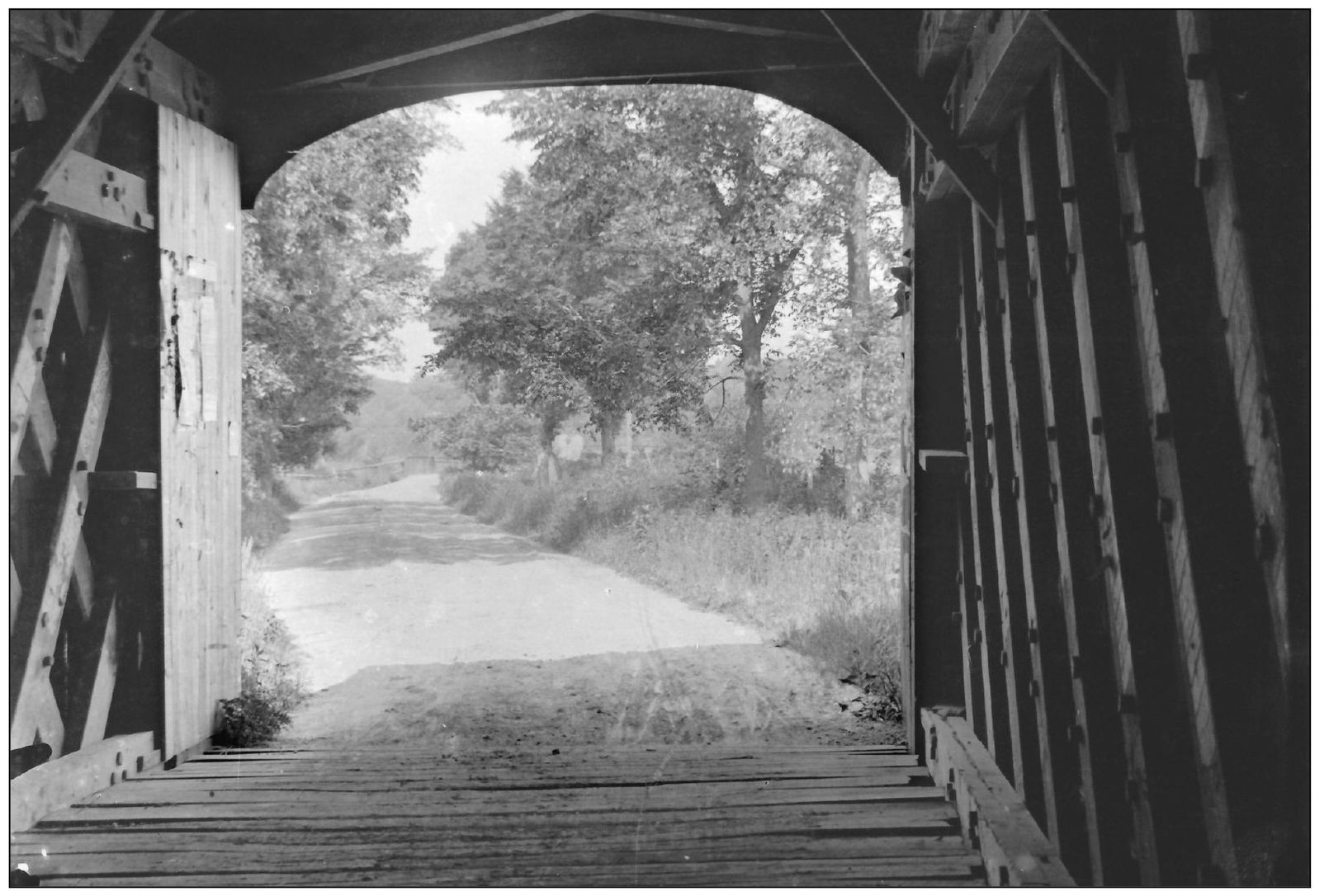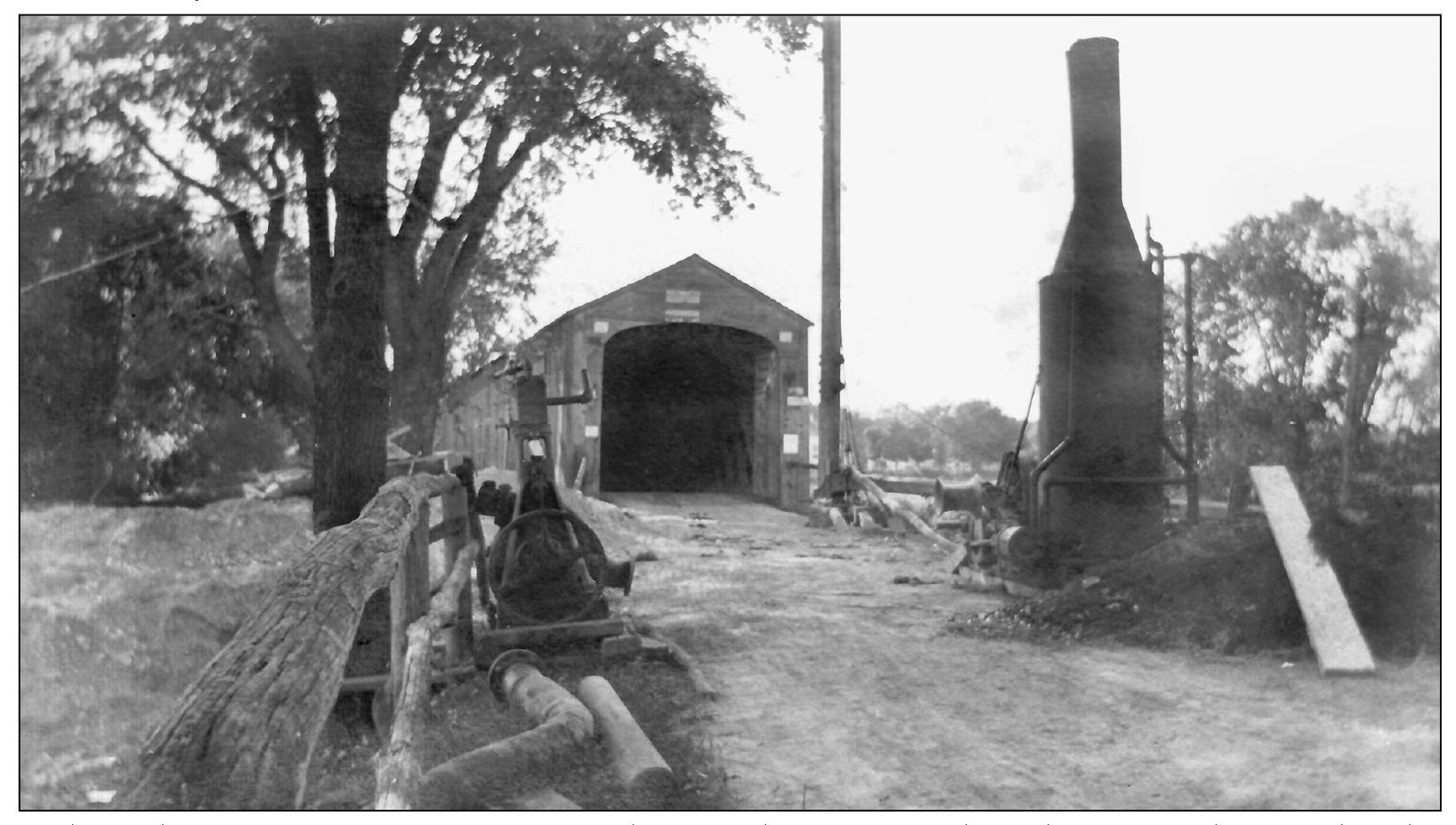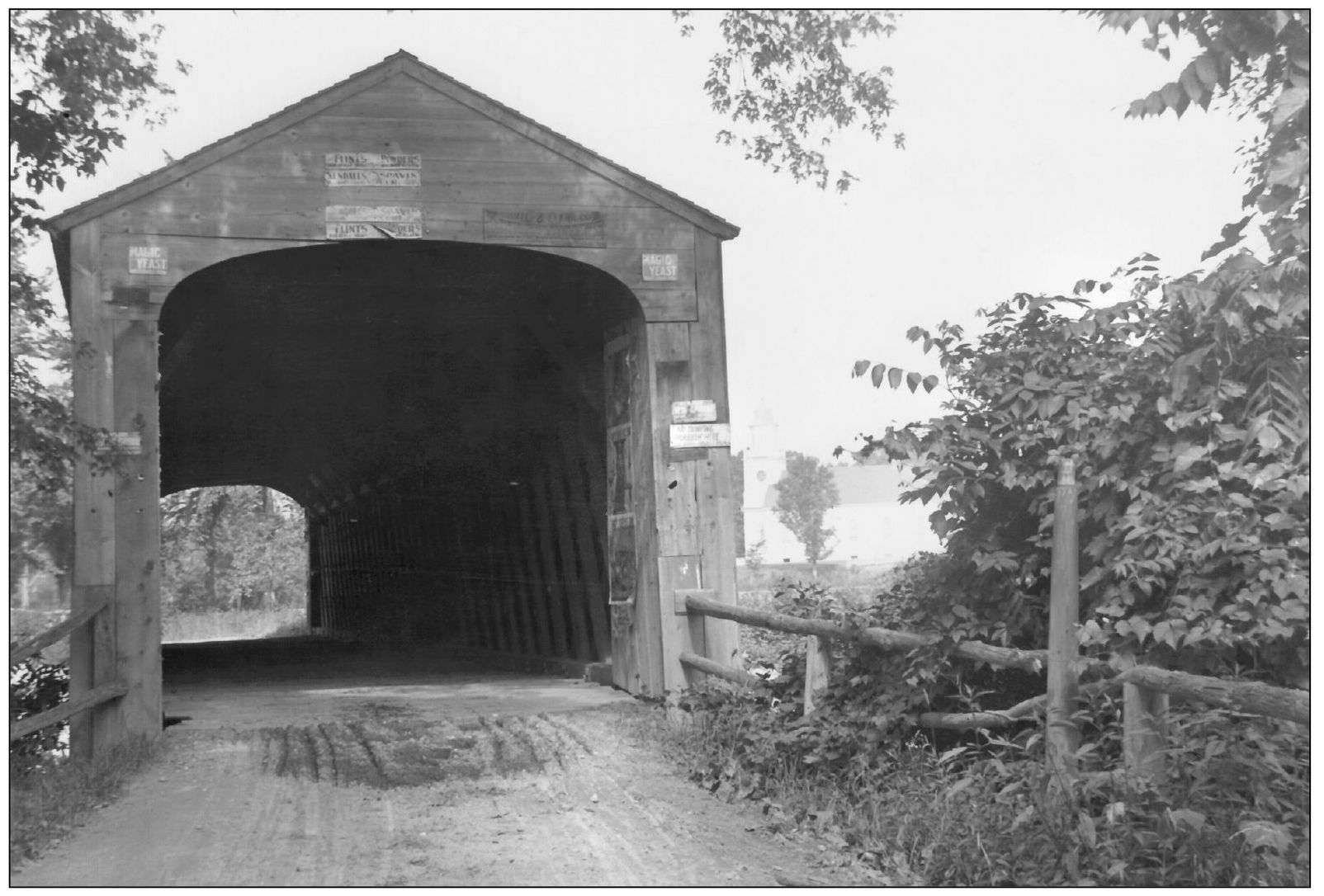ACKNOWLEDGMENTS
A project of this magnitude would not have been possible without the generosity and assistance of many individuals and institutions. For access to the handful of large collections that formed the heart of this project, thanks to Alexander Bardow of the Massachusetts Department of Transportation Bridge Section; Dick Chaisson from Athol; Peter Miller of Greenfield; Jim Miller, Betty Chapin, and David Prouty of the Sheffield Historical Societys Mark Dewey Research Center; and to Judy Warner and the Harvard Historical Society. Special thanks also to Bill Caswell, founder of the Covered Spans of Yesteryear project, for sharing a very useful database and passing along scans from several towns.
Equally important were contributors of images, sources, and information from individual towns and organizations, including Jayne Arata, Mary Bell, Jim Boone, Sylvia Buck, Julie Bullock, Dick Chaisson, Robert Cox and the University of Massachusetts Special Collections archives, the Chicopee Public Library, Nancy Dole, the Erving Public Library, Ed Finch, Jeanne Forand, the Harvard Forest, Tom Kelleher, Georgia Massucco and the Lee Library Association, Cliff McCarty, John McClure, Kathy Morris, David Norton, Pat Odinorne, Stan Olszewski, Jeanne Palmer, Gladys Pluta and the Williston Memorial Library in Easthampton, Stephen Roper, Jeanette Roubichaud and the Old Sturbridge Village Archives, M. E. Russell, Barbara Shiffer, Judy Schmitz, Bertyme Smith and the Barre Historical Society, Robb Strycharz, Judy Sullivan, Mary Thayer, the Ware Public Library, Katherine Westwood and the North Adams Public Library, Nancy Weyer, the Williamstown House of Local History, and Stephanie Young.
Many thanks to Erin Rocha, Ashley Boquist, and Jim Kempert, my editors at Arcadia Publishing, for encouragement and speedy assistance throughout all phases of this project and, as always, to my parents, John and Lale Burk, and brother, Nicholas, for their encouragement and support over the years.
This project is supported in part by a grant from the Petersham Cultural Council, a local agency that is supported by the Massachusetts Cultural Council, a state agency.
ABOUT COVERED SPANS OF YESTERYEAR
The Covered Spans of Yesteryear project was initiated during the summer of 2003 by a small group of covered bridge enthusiasts with the goal of compiling a listing and repository of information for the more than 13,000 covered bridges that are known to have existed in the United States and Canada since the construction of the Permanent Bridge across the Schuylkill River in Philadelphia in 1804. The project has benefited significantly from the generous support of many individuals, historical societies, and covered bridge organizations that have provided access to their collections of books, notes, postcards, and photographs.
While information about existing covered bridges is readily available, details on former covered bridges are often harder to obtain. During the late 19th and early 20th centuries, covered bridges were a ubiquitous part of the landscape without the romantic appeal that is associated with them today. As iron bridges became more popular, many towns looked forward to replacing their old, dark, sagging wooden bridges with new, modern, iron, steel, or concrete structures, and hundreds of others were lost to flood or fire. As a result, many passed into history with little fanfare or acknowledgment, and details of their existence are frequently limited to photographs preserved in a local historical society, postcards, a saved newspaper clipping, or mention in a town history.
The projects Web site ( www.lostbridges.com ) includes a searchable database containing detailed information about each bridge with source citations, pictures (if they are available), and a listing of information sources for further research. The Web site serves as a resource for anyone interested in covered bridges, past or present. Additional information and photographs are always welcome. Visit the Web site for more details and contact information.
Find more books like this at
www.imagesofamerica.com
Search for your hometown history, your old
stomping grounds, and even your favorite sports team.
One
SHEFFIELD AND THE BERKSHIRES
For more than 130 years, the southern Berkshires town of Sheffield was home to two covered bridges that crossed the Housatonic River near the village center. The northernmost of these was the Upper Bridge, which crossed the river at Sheffield Plain slightly less than a mile from the towns main intersection. (Courtesy Sheffield Historical Society Mark Dewey Research Center.)
The Sheffield Upper Bridge, which replaced a previous structure that was known as the Hubbard Bridge, was located in a scenic setting below the rolling hills of the Housatonic Valley. The exact year of its construction has been an issue of debate, with estimates ranging from the early 1830s (likely as a result of confusion with town records referencing the Lower Bridge, which was built during that time) to as late as 1855; however, a recent inventory of the town records has fixed 1854 as the most likely date. (Courtesy Sheffield Historical Society Mark Dewey Research Center.)
The Upper Bridge was an important link in the old post road that connected Boardman Street on the east side of the river to the village center. Mail was delivered to the town via the old Hartford Trail (the current Route 44). Visible on both sides of the image is the bridges Town truss frame, easily distinguished by its diagonal checkerboard timbers. (Courtesy Sheffield Historical Society Mark Dewey Research Center.)
Early20th century repair efforts are seen here on the Upper Bridge. The pine timbers used in the construction of the original 93-foot-long span proved up to the task of withstanding many long winters in the Housatonic Valley, and the bridge served traffic on an active town road off of Route 7 for more than 120 years. (Courtesy Sheffield Historical Society Mark Dewey Research Center.)
Posted on the portal of the Upper Bridge were signs for Flints Powders, Kendalls Spavin Cure, and Magic Yeast, all of which were familiar advertisers on covered bridges throughout the Northeast. A notice posted by the town selectmen prohibited trash dumping at the site. An 1864 town bylaw prohibited firing of powder and shot through the roof. (Courtesy Sheffield Historical Society Mark Dewey Research Center.)

